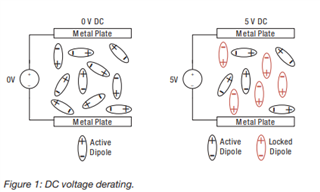Hello Team,
I have been reading the document LDO Basics (slyy151a) from TI.
The document refers to the capacitor DC voltage derating.
In the image, the locked dipole seems to align with the applied electric field. While the active dipole doesn't.
What exactly is a locked dipole and an active dipole?
I believe the dipoles in a capacitor need to be aligned with the applied electric field (just like a locked dipole).
Please correct me if I am wrong.
Looking for your reply.
-
Ask a related question
What is a related question?A related question is a question created from another question. When the related question is created, it will be automatically linked to the original question.

